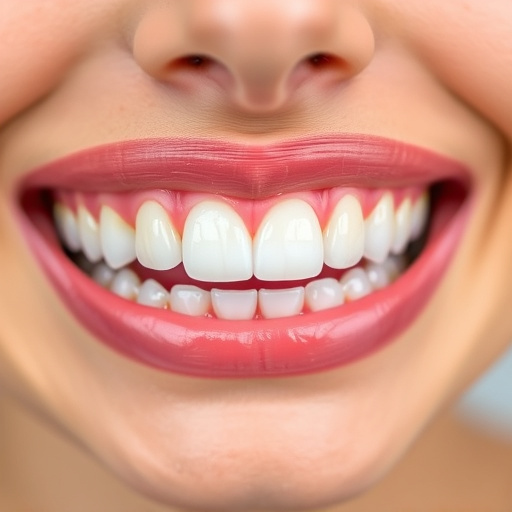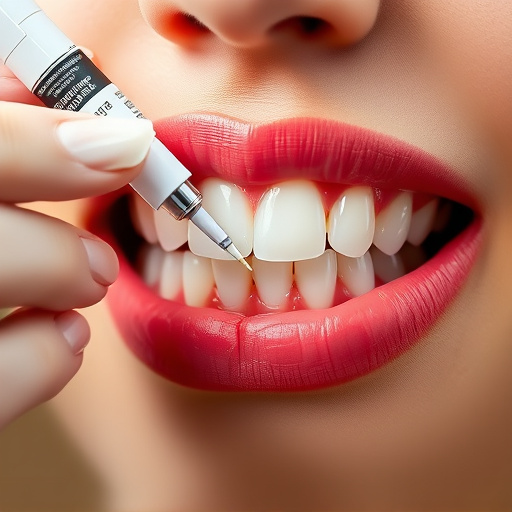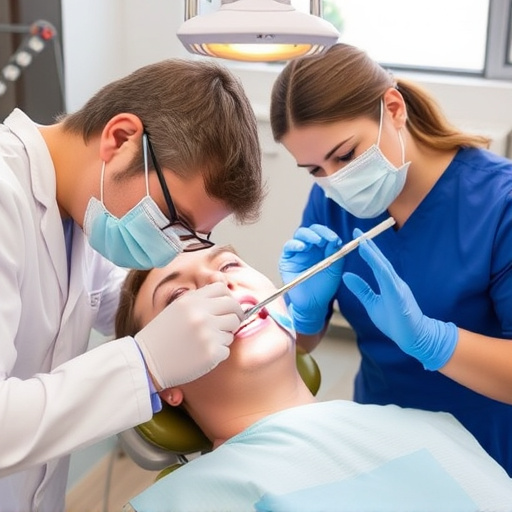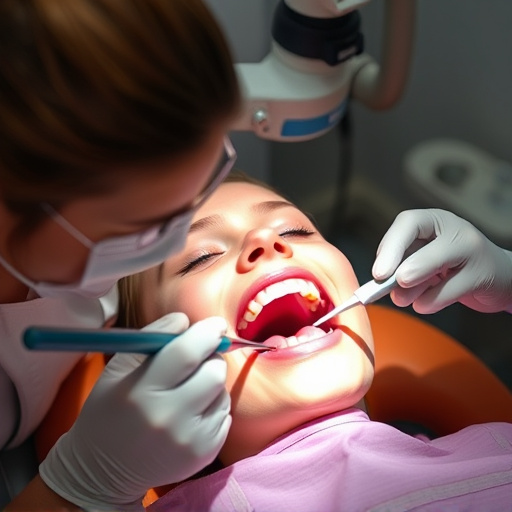Dental crowns and bridges are key restorative dentistry tools offering functional and aesthetic benefits. Crowns protect damaged teeth, restoring strength and shape, while bridges replace missing teeth, maintaining bite alignment and jawbone health. Bonding techniques secure these solutions, promoting long-term oral health for all age groups. They correct misaligned bites, gaps, and missing teeth, enhancing chewing efficiency, speech clarity, and facial structure, with implants offering a permanent alternative to clear aligners.
Dental crowns and bridges are essential tools for restoring bite alignment and oral health. This article delves into the intricate world of these dental restorations, focusing on how they enhance bite function and improve overall oral aesthetics. We’ll explore the role of dental crowns in protecting vulnerable teeth, their integration with bridges to replace missing dentition, and the significant benefits they offer in aligning teeth and restoring confidence.
- Understanding Dental Crowns and Their Role
- Bridge Replacement: Restoring Bite Function
- Aligning Teeth: The Benefits of Crowns and Bridges
Understanding Dental Crowns and Their Role
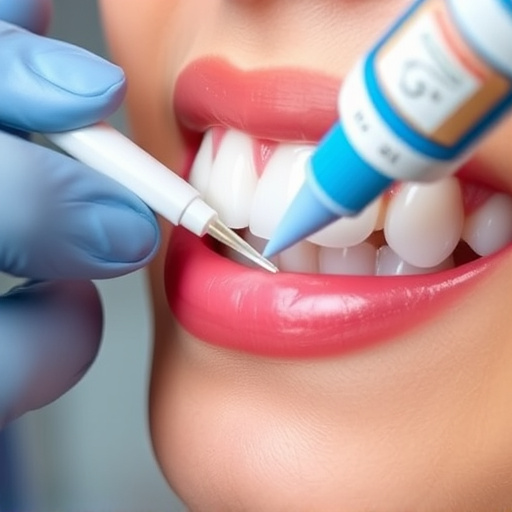
Dental crowns are a fundamental component in restorative dentistry, serving as a protective cap over a damaged or weakened tooth. They are designed to restore the tooth’s strength, size, and shape, improving its functionality and aesthetic appeal. When a tooth has suffered significant decay or is fractured, a crown can provide long-lasting durability and prevent further damage. This procedure involves preparing the affected tooth, taking an impression, and then crafting a custom crown in a dental laboratory. The final result is a seamless restoration that blends with the surrounding teeth.
Dental crowns work synergistically with dental bridges, which are used to replace missing teeth. A bridge consists of one or more artificial teeth (called pontics) held in place by crowns on either side. This innovative solution not only fills the gap left by the missing tooth but also maintains the natural alignment of the bite. By combining these procedures, a comprehensive dental care plan can be devised to address various oral health issues, ensuring proper chewing function and preserving the overall health of the mouth.
Bridge Replacement: Restoring Bite Function
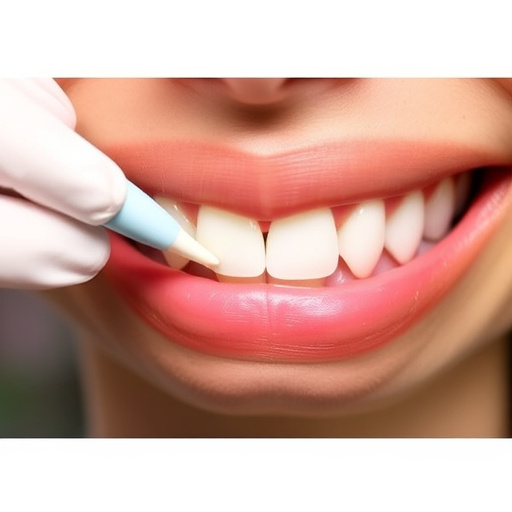
When a tooth is lost due to decay, injury, or even wisdom tooth removal, it can disrupt your bite alignment and overall dental health. Dental crowns and bridges are expert solutions that not only restore the aesthetic appeal of your smile but also play a pivotal role in maintaining proper occlusion. In the case of a missing tooth, a bridge acts as a false tooth supported by surrounding dental structures, effectively filling the gap left behind. This restoration not only enhances the smile’s appearance but also prevents neighboring teeth from shifting, which could lead to bite misalignment over time.
By replacing missing teeth with bridges, dentists can preserve the natural structure of your jawbone, which tends to atrophy after tooth loss. Moreover, dental bonding techniques often go hand in hand with crowns and bridges, providing additional support and ensuring a secure fit. These advanced procedures in children’s dentistry cater to all age groups, offering both functional and aesthetic benefits, thereby contributing to long-term oral health and improved bite function.
Aligning Teeth: The Benefits of Crowns and Bridges
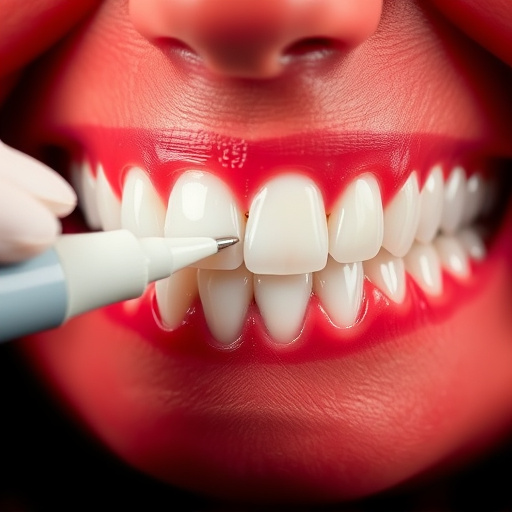
Aligning Teeth: The Benefits of Dental Crowns and Bridges
When it comes to bite alignment, dental crowns and bridges offer significant advantages. These restorative dental procedures are designed to address misalignments, gaps, or missing teeth, providing a functional and aesthetic solution. By attaching a crown to a prepared tooth or implant, dentists can restore its shape, size, and strength, ensuring proper bite alignment. Bridges, on the other hand, replace missing teeth with artificial ones, bridging the gap between adjacent natural teeth. This not only improves overall dental health but also enhances chewing efficiency and speech clarity.
Furthermore, dental crowns and bridges serve as a crucial component of preventative dentistry. Properly aligned teeth reduce the risk of gum disease, tooth decay, and other oral health issues. They also contribute to maintaining facial structure and preserving the natural beauty of your smile. Unlike alternative treatments like clear aligners, which may require extensive wear time, dental implants (a key component in crown and bridge placements) offer a more permanent solution for bite correction and tooth replacement.
Dental crowns and bridges are effective solutions for restoring bite alignment, enhancing oral health, and improving overall smile aesthetics. By understanding their roles and benefits, patients can make informed decisions about their dental care. Whether it’s a crown to strengthen a damaged tooth or a bridge to replace missing teeth, these treatments offer long-lasting results, ensuring a comfortable and functional bite for years to come.










